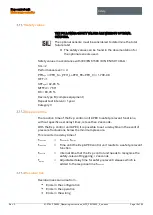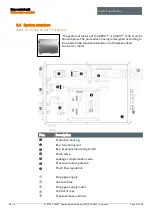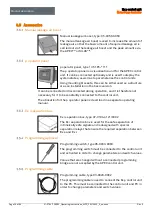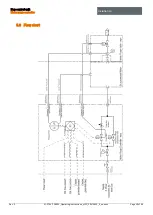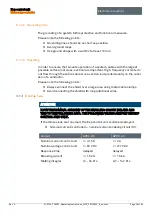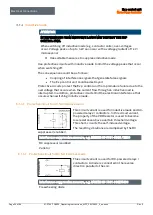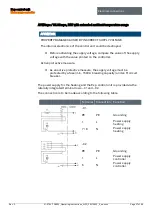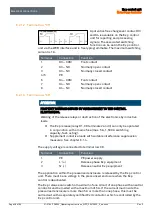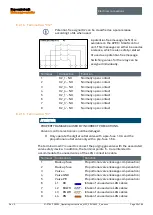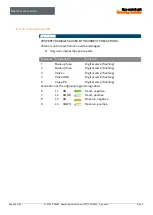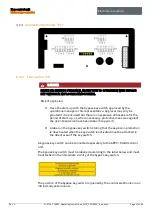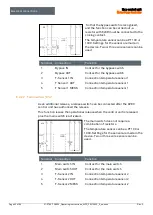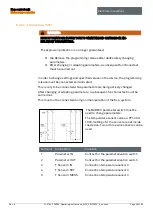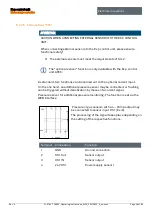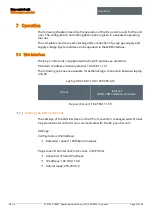
Electrical connections
Ex p control unit
Motor Purge Controller
Page 32 of 96
01-37A2-7D0003_Operating instructions_MPC_20210923_0_en.docx
Rev. 0
EMC-compliant connection
The electromagnetic compatibility of a complete system in
accordance with the EMC directive must be ensured by the
manufacturer (EMC-compliant construction of a system) and the
user (interference-free structure of a complete system).
The BARTEC Ex p control units can only work safely and trouble-free with EMC-
compliant wiring. This chapter supports you in setting up your system in
accordance with EMC.
When an electronic or electrical device is in operation, it interacts with other
neighbouring devices. The neighbouring devices act as a source of interference,
which in turn affects the other device as a susceptible device.
BARTEC Ex p control units are considered to be electromagnetically compatible
and have been developed in compliance with the applicable EMC standards and
limit values.
A professional, clean line connection contributes greatly towards the safe
operation of the Ex p control unit under the influence of EMC.
6.1.2.1
Lines and connections
Please note the following points:
Divide the lines into groups.
Power cables (power lines, power supplies)
Signal lines, shielded, min. 0.5 mm²
Data lines, shielded
When wiring, ensure that the cables are routed properly. Make sure that
cross-coupling between signal / data lines and power cables is avoided.
Signal lines and power cables may only cross at right angles
Route signal and data lines as close as possible to ground planes
Unused wires in the signal and data lines should be short-circuited and
grounded (additional shielding effect)
If possible, lay signal lines only on one level in the device and only insert
them into the device from one side.
Avoid the formation of current loops.
Make sure that unshielded lines within a circuit (forward and return
conductors) are twisted in pairs as far as possible.
If possible, lay short cables. This means that coupling capacities and
inductance can be avoided.
Do not lay cables and wires freely in the device, but route them as close
as possible to the housing wall or to grounded mounting surfaces.
Use ferrite cores for the inserted cables.
Here, the individual conductors have to be led through the
ferrite core in a loop.


